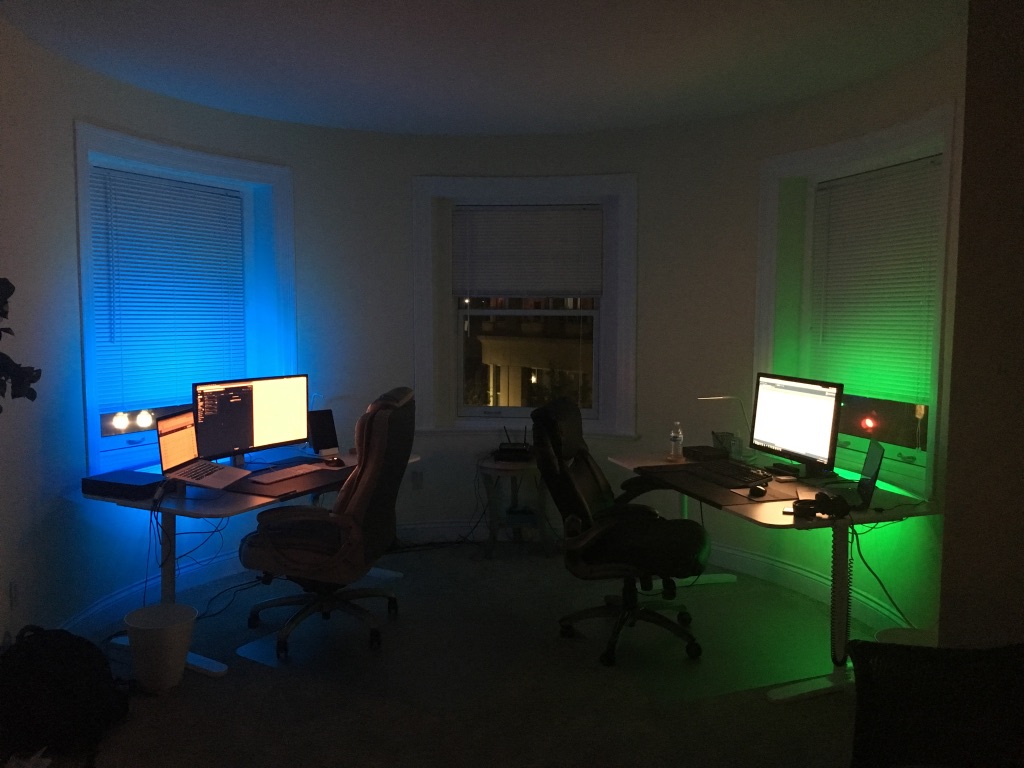
Why I Founded Visor: Narrowing the Divide
“The future is already here – it’s just not evenly distributed.”
– William Gibson, Science Fiction Novelist
At an early age, I witnessed how technology divides people into the techno-haves and the have-nots. As technology progresses, those who grasp it get pulled upward; those who don’t are often left behind. This gap only widens over time. Bridging this gap is a crucial challenge for the 21st century — and my personal mission.
The”Digital Divide” is usually defined by difference in access. I, however, am most interested in the gap between what technology makes possible and what the everyday person can actually do with it. Fortunately the access gap (for underprivileged communities) has been improving over the last decade. The next challenge becomes leveling up people’s capabilities to leverage new technology. As the OECD observed, “The gaps that define the ‘learning digital divide’ become as important as the more obvious gaps in access to the technology itself.”
My personal mission is to narrow the digital divide by building products that elevate the capabilities of every individual. This journey began serendipitously twenty years ago when I discovered how much impact I could have simply building websites for local businesses. It has grown to become a career-defining motivation. This is why Visor’s vision — empowering everyone to accomplish more with their data — is so personal.
The early days: Yaro1.com and MikeYaroSoft, Inc.
I was lucky to become a techno-have at a young age. Technology seemed like it held answers to all my problems. But for many around me, technology was intimidating — sometimes downright threatening.
In 2001, at 11 years old, I put my first website out on the world wide web. Yaro1.com (which now redirects to this website) was a collection of web games that my classmates and I could play in the computer lab at school. The school’s web filters had blocked all of the popular game websites. To get around that, I downloaded the games, hosted them on my own website (that flew under the radar of the school’s filters), and set up a speakeasy-style password gate. Nearly half of the 300 students in my grade registered to get access codes.

When students started wearing Yaro1.com T-shirts around school, the administrators and teachers took notice. Rather than raining on our parade, they asked me for help with their own technical problems.
A gym teacher who ran a summer soccer camp needed to advertise online and accept electronic registrations. My chorus teacher needed an online place to promote her voice coaching. What started out as a hobby soon turned into a lucrative opportunity. That’s when I started my first company, MikeYaroSoft, Inc, with a promise that we’d help local businesses to “illuminate yourself.”

At the age of 16, I was running MikeYaroSoft as a profitable business — but that’s not what motivated me. The best part was the personal fulfillment from empowering everyday people with technology. I didn’t realize it at the time, but this experience would go on to influence the course of my career.
The path to founding Visor
Looking back, I can connect the dots and see the pattern. My favorite projects and accomplishments have one thing in common: they all connect everyday people with the power of technology.
- 2001: Yaro1.com brings web games to the masses (circumventing the middle school game filter)
- 2006: MikeYaroSoft, Inc. empowers local businesses with the power of the world wide web
- 2009: I created the TigerApps program at Princeton to improve student life by centralizing and promoting web apps (by students, for students)
- 2012: Tdloo: The Psychology of UX design, my undergraduate thesis at Princeton, wins a departmental award for exploring how psychology can improve how we build software for people
- 2013: My “Salesforce Optimizer” plugin at Insight Venture Partners eases the friction of my colleague’s frustrations with the CRM
- 2016: I start RocketVisor to simplify working with systems of record (like Salesforce)
- 2019: RocketVisor becomes Visor, as we embrace the power of the spreadsheet
RocketVisor’s goal was to improve performance of employees by simplifying the complexity of working with SaaS apps, like Salesforce CRM. We viewed the widespread usage of spreadsheets as a symptom of this problem. But when we struggled to convince users to leave their spreadsheets, we realized that the spreadsheets were actually closer to the ideal solution than our new product. This is when we had our “aha!” moment.

However, these personal spreadsheets were disconnected from all the data in their company’s SaaS applications. Disconnected spreadsheets create headaches when they get out-of-sync. We saw them cause deadlines to slip, time to be wasted, and revenue to be lost.
The idea of syncing data to/from spreadsheets was not new. But the existing products on the market were way too complicated for most people. They worked for software engineers and data analysts, but others struggled.
We saw this as a huge opportunity to empower everyday people to get access to their business data within their spreadsheets. After some further demand testing proved this to be a viable path, we set out on this new direction. Our goal was to create a spreadsheet with the world’s easiest built-in two-way integration.
After just three months of building, we launched a limited public preview in October 2019. During the 5 months the alpha product was public, over 1200 users discovered Visor’s new product. Within a few weeks, the invite rate soared and people were coming back to the product every day.
Armed with raw data on how people want to use Visor, we got back to work.
Now, in 2021, we’re so excited to announce the next step for Visor. Our journey is one that’s deeply connected with my personal mission.
Reflecting back, the pivot from RocektVisor to Visor taught me that adapting technology to people is better than forcing people to adapt to technology.
Cheers to what’s next,
Yaro
This was originally shared at https://www.michaelyaroshefsky.com.

